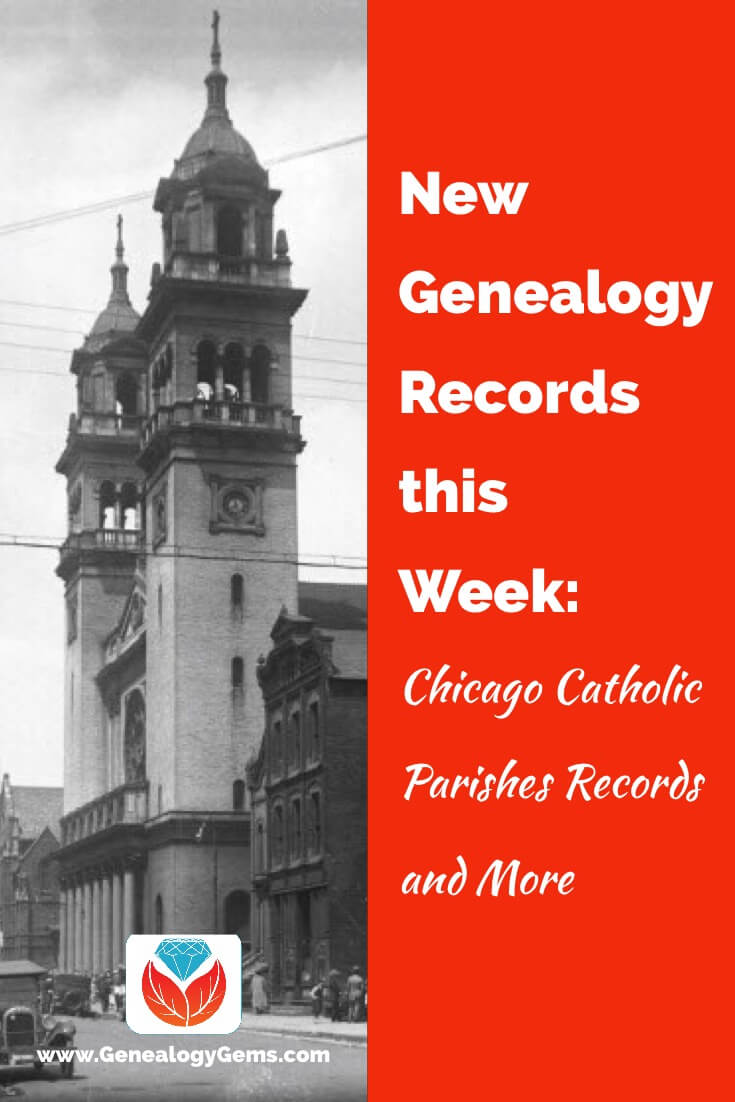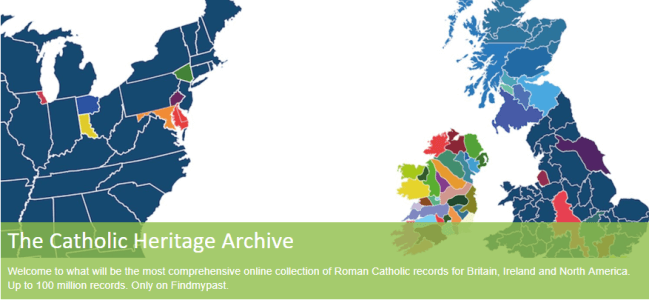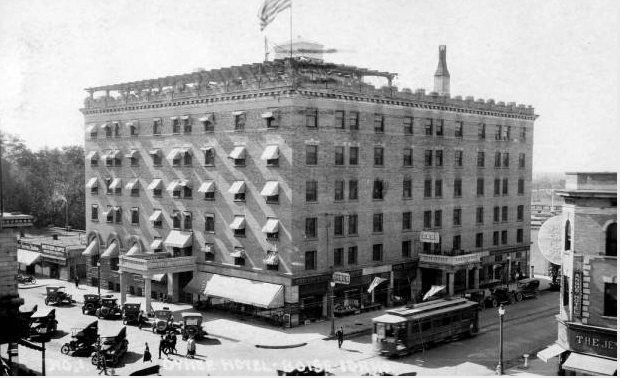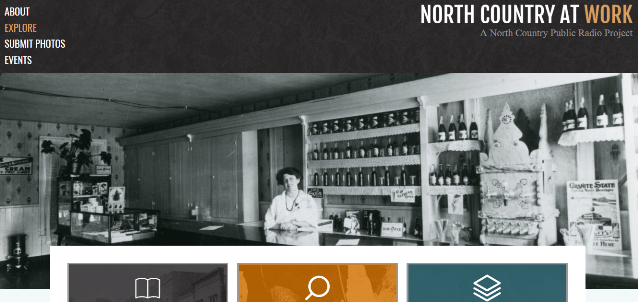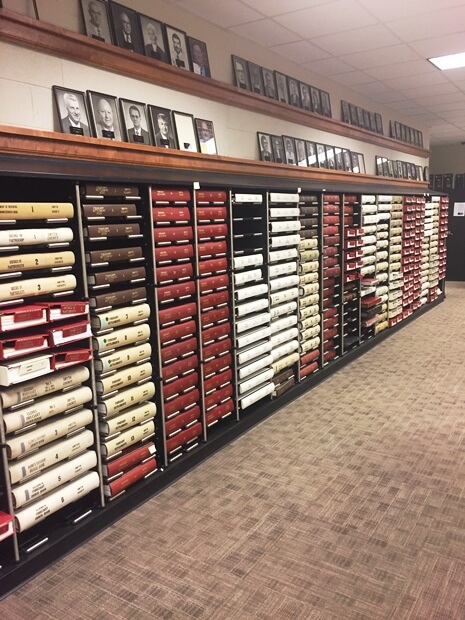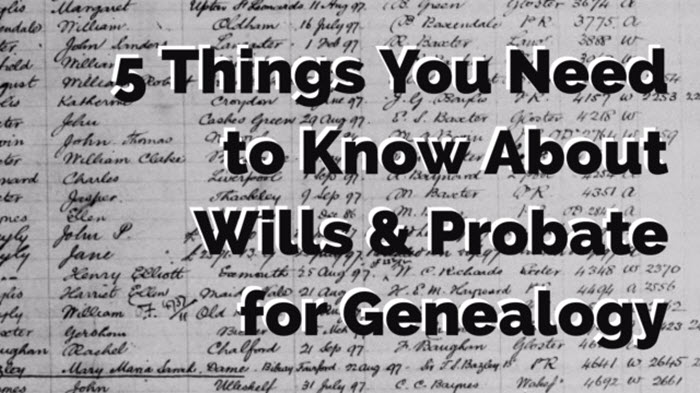Blog


Here are the Genealogical Resources You are Not Seeing
In the digital era, it’s more important than ever to digitize your family history: tree data, photos, stories, interviews, home movies and compiled research. Digitizing preserves the information against loss and allows others to enjoy it now. And for future generations, it’s even valid to ask, “If it hasn’t been digitized, does it even exist?”
The Library Experience in the New World
Recently I read a thought-provoking article at Forbes.com called “In the Digital Era, If It Hasn’t Been Digitized Does It Even Exist?” Of course I had to read it. This passage caught my attention:
“Libraries as physical spaces are evolving in the digital era. In the front of the house, vast warehouse-like rooms filled with stacks of physical books, microform readers, film viewers, listening booths and other specialized equipment are being replaced by collaborative working spaces. In the stacks, materials are increasingly being moved to offsite high density storage facilities that prohibit direct researcher access. Gone are the days of serendipitous discovery, where a researcher could just walk down endless rows of stacks uncovering works they never knew existed. Today, if a scholar doesn’t know to look for a particular work, for all intents and purposes it simply doesn’t exist.”
This brought to mind my last visit to the Family History Library in Salt Lake City, the largest genealogical library in the world. The first floor, which used to be filled to the brim with cabinets of microfilm and other resources, is now the Discovery Center. (To learn more about the Discovery Center watch my YouTube video tour, shown here.) On other floors, there have been dramatic changes as well, and the collaborative workspaces mentioned in the article are front and center. While these changes are exciting and innovative, they have changed the library experience.
This evolution also relates to our genealogy research: all those existing but still hidden-to-us history books, directories, old letters or reminiscences, photograph collections and other items in which our family’s stories may lay hidden. The chances of stumbling upon them through genealogical serendipity have been reduced.
Bottom line: knowing how to navigate online searching and card catalogs is more important than ever.
“Gone are the days of serendipitous discovery,
where a researcher could just
walk down endless rows of stacks
uncovering works they never knew existed.”
An Existential Question about Digitized Records
In the case of online archives, it’s not so much a case of what is being moved out, but rather, what has never been moved in. One of the really intriguing arguments in the Forbes.com article is what’s missing from our online digital archives: much of the 20th century.
Unlike a physical library where the latest books appear alongside books of years gone by, online repositories are often void of these newer works. This occurs because so many post-1922 published and creative works are still copyright-protected. Therefore, their contents are not as well-represented in open, free digital archives such as HathiTrust, the Internet Archive and Google Books. (I dig into these more in depth in Genealogy Gems Premium Podcast Episode 105.)
The article points out, “Nowhere is the impact of copyright more apparent than the map [below], which places a dot at every distinct geographic location mentioned in English language books in the Internet Archive book archive by year of publication 1800 to 2013.”
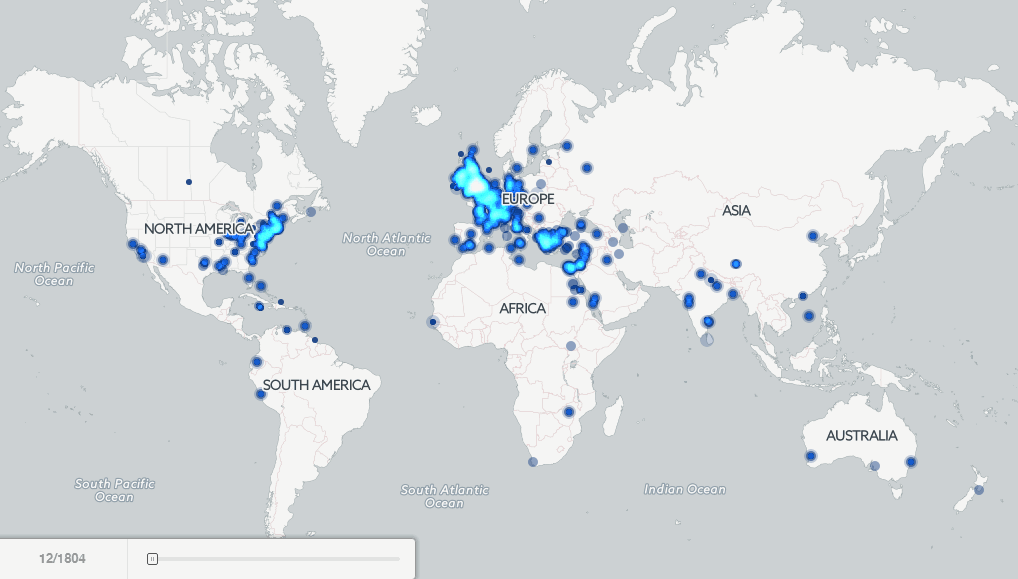
Watch the dots as they map out mentions of place names in books over the years (the years progress along that bar on the lower left). As you’ll see, starting in about 1922 when copyright kicks in, a lot of place-mentions disappear because fewer resources are on The Internet Archive. The article concludes: “To the world of open data mining and full-text search, the most recent century largely doesn’t exist: our automated algorithms know more about 1850 than they do of 1950.”
This data visualization map makes it clear that when it comes to genealogical research and online databases, we must keep in mind the impact that copyright may be having on what we are seeing. This is not to say that it isn’t possible to find post-1922 works online. Instead, it’s a reminder that no archive, whether online or offline is complete. We need to keep fine-tuning our search skills to tease out the gems from the wide range of available resources. In specific terms, this means bringing online card catalogs usage to the forefront of our approach and familiarizing ourselves with the search “Help” pages offered on most websites that feature large online or offline collections.
Is Your Family History Missing?
Though this concept of “what is missing” clearly applies to the way we research, it also applies to decisions we make about digitizing our own family history. We want our painstakingly-reconstructed family tree data, precious family photos, stories, oral history interviews, home movies and compiled research to exist well into the future. And they won’t “exist” nearly as effectively if they aren’t digitized and shared.
This begs the question of how best to organize and share all your family history data. That’s a big topic, and it can quickly become overwhelming. But like just about everything else in genealogy, answers start at home.
I’m a big advocate of maintaining your own master family tree. This entails using a genealogy database software program (I use RootsMagic) on your own home computer which is properly backed-up with a Cloud backup service. (I use the 24/7 cloud backup service Backblaze). When your master data is on your own computer, it isn’t vulnerable to the changes experienced by websites and companies that can come and go.
If you started with building your family tree on a website, start by exporting / downloading it as a universally recognized GEDCOM file. (Here’s how to download your family tree from Ancestry.com.) Once you’ve got your master family tree, import it into your software. This master family tree on your own backed-up computer is your first step toward digitizing and sharing your family history with future generations in an organized, coherent way. You now have one place for everything, and it’s completely under your own control.
Next, start going through the stuff you haven’t organized yet: all your digitized documents, images, and research notes. Then move on to those paper files and photos that haven’t been digitized yet. A flat bed scanner will come in very handy at this stage.
The final piece of the puzzle is to share what you have learned about your family history:
- on your favorite Genealogy Giants website
- in short stories you write on a family history blog
- in short video narratives you create and share on YouTube
- in a digital book you can share with a digital archive such as FamilySearch.org
These are just a few ideas.
More Help
If you’re a Genealogy Gems Premium eLearning member, there are several videos available to you to help you start organizing, digitizing, and sharing your family history:

About the Author: Lisa Louise Cooke
Lisa is the Producer and Host of the Genealogy Gems Podcast, an online genealogy audio show and app. She is the author of the books The Genealogist’s Google Toolbox, Mobile Genealogy, How to Find Your Family History in Newspapers, and the Google Earth for Genealogy video series, an international keynote speaker, and producer of the Family Tree Magazine Podcast.
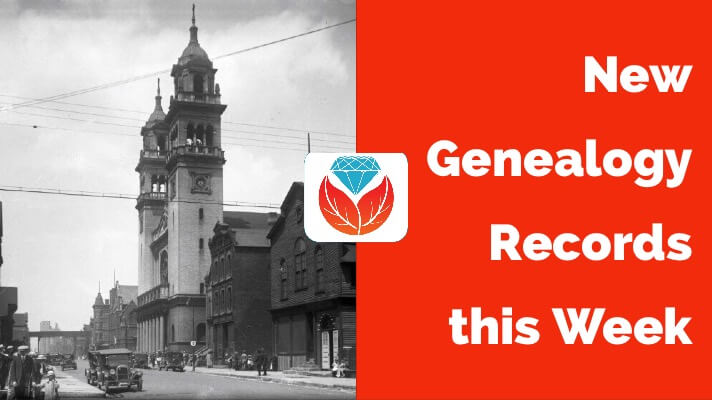
New Genealogy Records this Week: Chicago Catholic Parish Records and More
Chicago Catholic parish records top this week’s list of new and updated U.S. genealogy records online. Also: Japanese internment camp testimonies; AK and NC WWI digital archives; CO, GA and NC school records; GA and MT newspapers; ID, NY and OR photo archives; IL maps; MA church records; VA military casualties and WA history.
Featured: Chicago Catholic parish records
Genealogy Giant subscription website Findmypast.com has added more Chicago Catholic parish records to its unique and valuable Catholic Heritage Archive. During the nineteenth century, Chicago was one of the fastest growing cities in the world, with the population increasing twenty-fold between 1860 and 1910 to make it the fifth largest city in the world. Chicago was a veritable boomtown, with its population swelling with European emigrants from Europe, particularly Czech and Polish. The Archdiocese of Chicago was first established as a diocese in 1843 and later as an archdiocese in 1880. It serves the Catholic population of Cook and Lake Counties in northeastern Illinois.
Recently added are:
- Over 1.2 million additional records from the mid-1800s up to 1925 have been added to the existing collection of Chicago Catholic Baptisms. Records reveal the date and location of baptism, the names of parents, and their residence. Each result will provide a transcript and image of the original baptism register.
- Over 597,000 additional records have been added to Chicago Catholic Marriage records. Each result includes a transcript and an image of the original marriage register that may reveal the couple’s marriage date, marriage location, the names of their parents, and the names of any witnesses.
- Over 229,000 recently added burial records have been added to Chicago Roman Catholic Parish Burials. Images may reveal additional details such as cause of death, residence, place of birth, father’s name, mother’s name, and the name of the priest who conducted the service.
- More than 430,000 assorted Catholic congregational records from across the archdiocese reveal biographical details as well as where and when your ancestors worshiped. Searched indexed images of an assortment of records.
- Not finding your ancestors, or want to dig deeper into these records? You can now delve through original registers of baptisms, marriages, and burials page by page in the image collection Chicago Roman Catholic Parish Registers.
More U.S. genealogy records now online
Japanese internment camp testimony. A new digital collection has launched containing testimonies relating to the WWII-era internment of U.S. residents of Japanese descent in the American Commission on the Wartime Relocation and Internment of Civilians (CWRIC) hearings that took place in 1981. According to an online article in the Northeastern Illinois University Independent, “The collection contains the hearings, testimonies and individual accounts that were held in the internment camps; these hearings were held to investigate the ethical and constitutional objections” of the executive order that led to the forced detainment of about 120,000 Japanese-Americans for about three years.
Arkansas. The Arkansas State Archive has launched “Arkansas in the Great War,” a three-part online exhibit chronicling the history of the state during World War I. According to the state archives blog, “The exhibit was created through Google Arts & Exhibits and contains over 150 high-resolution images of photographs, letters, government documents and maps that tell the story of Arkansas’s involvement in the war. The first section, ‘Mobilizing the State for War,’ profiles Arkansas before the U.S.’s entrance into the war and how the state mobilized to meet the challenge. Part two, ‘The War at Home,’ examines the domestic impact the war had on Arkansans and explores the contributions of women and African Americans to the war effort. The last section, ‘In the Trenches,’ details Arkansans serving in Europe and the events immediately following the end of the conflict.”
Colorado. The University of Denver’s 123-year-old student newspaper, The Denver Clarion, has been archived online at the university’s Special Collections website. The issues aren’t listed fully chronologically and the collection is still growing; check back to find the issues you’re looking for.
Georgia. The Digital Library of Georgia has added new content documenting Atlanta’s Interdenominational Theological Center and Morehouse, Morris Brown, and Spelman Colleges. Yearbooks, academic journals, alumni news, photos, course catalogs and more are now available for these historically African American colleges. Click here to read more and access the collections.
The Digital Library of Georgia has also added newspapers covering Early, Montgomery and Toombs Counties in South Georgia to its Georgia Historic Newspapers website. The collection covers nearly 27,000 digitized pages from six different newspapers dating from 1863 to 1927.
Idaho. The Idaho Transportation Department has launched an archive of 30,000 historic photos it has taken over the years that reflect the state’s history. According to the East Idaho News, “It allows anyone interested to easily access photos as old as 100 years, giving them a look at what the Gem State used to be like. Since its launch a little over two weeks ago, the department has had over 20,000 people access the database.” A collection of historic postcards is also part of the digital archive. Click here to view more about the downtown Boise hotel shown here.
Illinois. Southern Illinois University has published a new online collection of current and historical maps. According to the announcement, “More than 850 maps from the library’s collection have been digitized….The Maps of Southern Illinois Online collection covers the city of Carbondale and the rest of Jackson County as well as other Southern Illinois counties. Included are maps showing county roads, land ownership, proposed developments, aerial photographs, and coal, oil and gas mining maps.
Massachusetts. The New England Historic Genealogical Society has been busily adding more digitized records to its subscription collection at AmericanAncestors.org. Among their recent additions are:

- Norfolk County, MA: Probate File Papers, 1793-1877. Made possible through our partnership with the Massachusetts Supreme Judicial Court Archives, this database contains 20,904 probate cases filed between 1793 and 1877, and more than 515,000 individual file papers.
- More parishes added to Roman Catholic Archdiocese of Boston Records, 1789-1900. New parishes include St. Mary (Randolph), St. Mary (Marlborough), St. Patrick (Stoneham), St. Mary (Lynn), St. Joseph (Haverhill), Immaculate Conception (Marlborough) and St. Margaret (Dorchester).
- Digitized records from two Boston churches, the Federal Street Church(1787 to 1796) and the New North Church (1798 to 1814), as well as the West Church of Granby, Massachusetts.
- FREE TO VIEW: the digitized diary of Mehitable Williams of Mansfield, Massachusetts (written between 1765 and 1770), and the journal of Richard Hazen (written while he surveyed the coast of Maine from 1750 to 1751).
- More than 1,500 pages of the Hebrew Immigrant Aid Society (HIAS), Boston record collection; members can click here to access the collection and search case files. Anyone may read a related HIAS case study, “Effectively Stateless,” posted on Vita Brevis.
Montana. Over 1.6 million pages of the Billings Gazette have been digitized as part of a partnership with Newspapers.com, reports the Billings Gazette online. Newspapers.com subscribers may click here to explore that paper and the rest of the site’s offerings. Another tip from the Billings Gazette: “Lee Enterprises, which owns The Gazette, also has a similar agreement that digitized its sister publications in Butte, Helena, Hamilton and Missoula. (The Gazette’s archives may be accessed with a subscription at billingsgazette.com/archives.)”
New York. North Country Public Radio has announced the launch of its new archive, “North Country at Work,” covering upstate New York history. According to the site, its purpose is “exploring the work history and contemporary economic landscape of each of the communities in the Adirondack North Country. Our starting point is photographs—images of people at work, the tools they use, the spaces their work occupies or impacts…We expand to personal stories, oral histories, and other content to deepen our understanding of how the livelihoods of people across northern New York looked in earlier times.” The public is invited to contribute.
North Carolina. The State Archives has added 60 new items to its North Carolina in World War I digital archive. Among the items are correspondence from a woman at the Front, war journals, field notebooks and other papers. Click here to read about and access the new additions.
Also for North Carolina, now at Digital NC you can “browse through 175 issues of The Stentorian, the North Carolina School of Science and Mathematics’ (NCSSM) student-run newspaper,” states the Digital NC blog. “NCSSM is a residential high school located in Durham, NC. It was founded in 1980 to provide a two-year public education to high school students focusing on science, math, and technology. The Stentorian covers student life and school events spanning the last four decades, from 1981 to 2017.” Click here to read more.
Oregon. The Portland Mercury reports that “The Multnomah County Library just launched a new digital collection of photos and documents chronicling Portland’s African American community over the years. Called ‘Our Story: Portland through an African American Lens,‘ the collection melds archives from Oregon Historical Society Research Library, Oregon State University, and City of Portland Archives.”
Virginia. A newspaper, The Virginian-Pilot, has launched an online database “of every Virginian who lost his or her life serving abroad in the military since the Sept. 11 terror attacks. The database includes a short story about each one, compiled from news reports across the country, obituaries, memorial websites, social media posts and YouTube videos, among others.”
Washington. A partnership between state and educational leaders has produced Primarily Washington, “an online education portal designed to bring lesson plans together with the primary sources in our collections,” according to the state Secretary of Education’s blog. “The Primarily Washington portal currently contains 6 lesson plans, on topics including the Everett Massacre, Territory to Statehood, teaching elections, and Legacy Washington’s Korea 65 exhibit. Drawing from our plethora of newspapers and items in our Classics in Washington History digital collection, more lesson plans will be added this summer. The portal also presents the Emma Smith Devoe Scrapbook Collection, a wide-ranging set of early 20th-century newspaper clippings and other documents about important contemporary topics such as women’s suffrage.”
Keep track of your online discoveries
Ever found something online–perhaps at a site like those mentioned above–then forgotten where it was? Watch Lisa Louise Cooke’s free video for FANTASTIC tips on organizing your online life. Your searches, your discoveries, your emails–whatever content you use online, Lisa’s got a way to organize it so you can find it again!

About the Author: Sunny Morton
Sunny is a Contributing Editor at Lisa Louise Cooke’s Genealogy Gems; her voice is often heard on the Genealogy Gems Podcast and Premium Podcasts. She’s known for her expertise on the world’s biggest family history websites (she’s the author of Genealogy Giants: Comparing the 4 Major Websites); writing personal and family histories (she also wrote Story of My Life: A Workbook for Preserving Your Legacy); and sharing her favorite reads for the Genealogy Gems Book Club.
Disclosure: This article contains affiliate links and Genealogy Gems will be compensated if you make a purchase after clicking on these links (at no additional cost to you). Thank you for supporting Genealogy Gems!

Courthouse research tips for genealogists
3 courthouse research tips for genealogists
Courthouses are one of my favorite places to conduct my genealogy research. Many of our courthouses have a wealth of genealogical records and information.
Courthouses may not have the word “archive” on the building but they are a type of archive. Here are some tips that will help you be successful the next time you are doing genealogy research at a local courthouse.
1. Scout the logistics
Call ahead to find out the days and hours of operation. This is the most important tip I can give anyone about researching in courthouses. In most courthouses, there are different offices for different types of records. Each office has their own phone number and can be contacted concerning hours of operation. Also, ask what days and times are best for a genealogist to visit their office to do research.
Ask about the availability of parking at the courthouse. Many of our courthouse campuses have limited parking for patrons. This problem is often made worse on days when court is in session and many people arrive to participate in court actions. Arriving at the courthouse and ready to do research, you do not want to discover that the only place to park is a block away or at the distant parking garage.
2. Locate records ahead of time
Ask about the availability and location of records. It might be a no-brainer that the deed records will be found in the Register of Deeds office. But are the oldest deed books there–the ones you need? Many times, courthouse offices run out of room for the old records and will transfer them to the county archives, which may not be located in the courthouse. It is important to know what records are available in the office where you wish to do genealogy research. If the older records have been sent to the archives or some other facility, you want to know that before you get to the courthouse.
3. Be patient
Whether you are visiting the courthouse or working with them through phone calls and emails, patience is a key element. As a genealogist, I know the urgency we all feel in trying to locate our ancestor’s records. Many times, we are experiencing great momentum in our genealogy research and we do not want to be hindered in our quest for that one piece of information we are seeking. If you walk into an office and they are very busy, please be patient if the staff member asks you to wait before they can get those old dusty books from the back room. If you have emailed or telephoned an office and they have told you they will get back with you, be patient and wait for that response.
The records that can be found in courthouses can be essential to our genealogy research. Implementing these tips will help you be more successful when doing research at the local courthouse.
Ready to get serious about courthouse research?
Check out this excellent article on researching wills and probate records by Margaret Linford. Her tips will help you understand what’s in these courthouse essentials, where to find them–and what to do with your bored non-researching travel companions!

About the Author: Melissa Barker is a Certified Archives Records Manager, the Houston County, Tennessee Archivist and author of the popular blog A Genealogist in the Archives and an advice columnist. She has been researching her own family history for the past 27 years.




